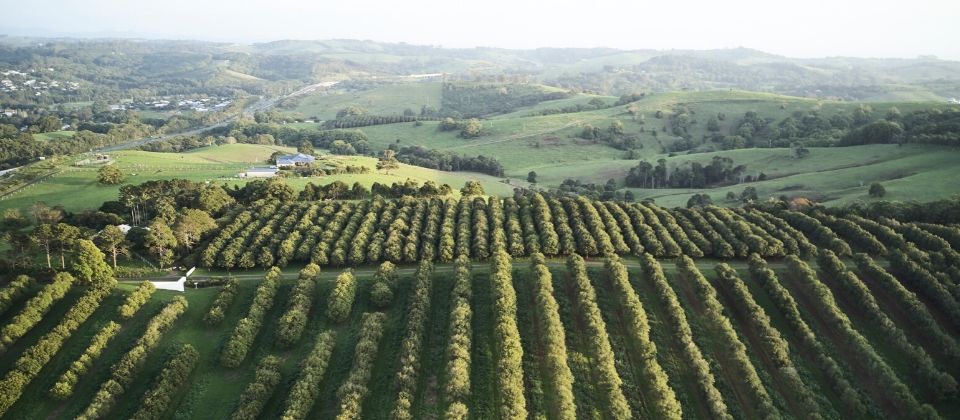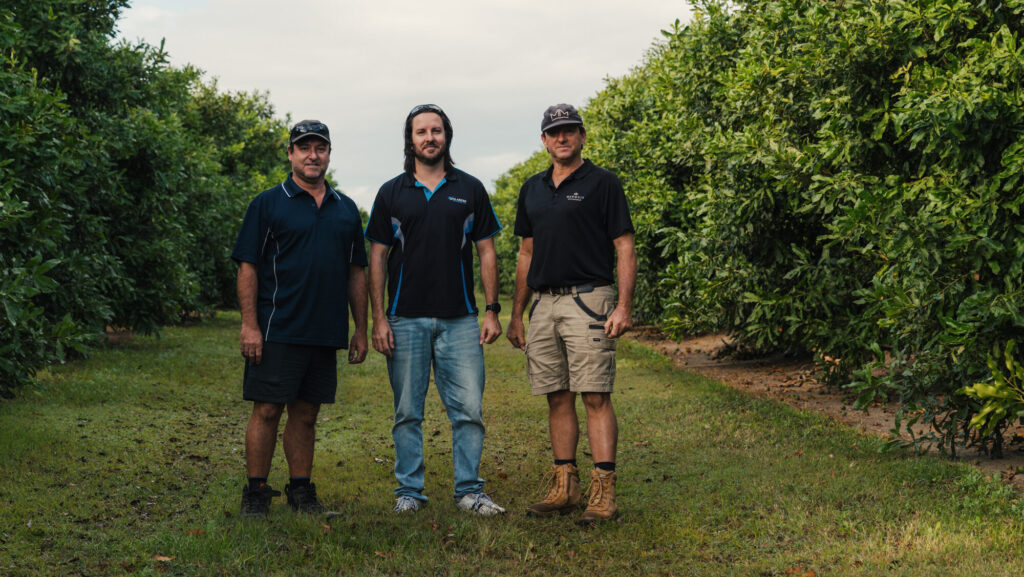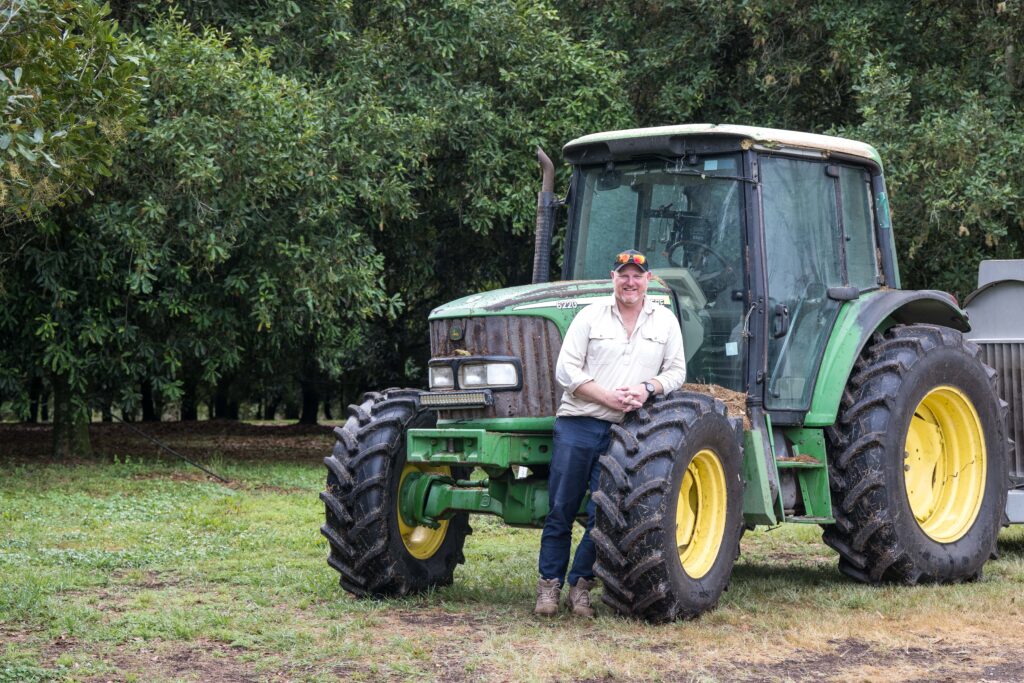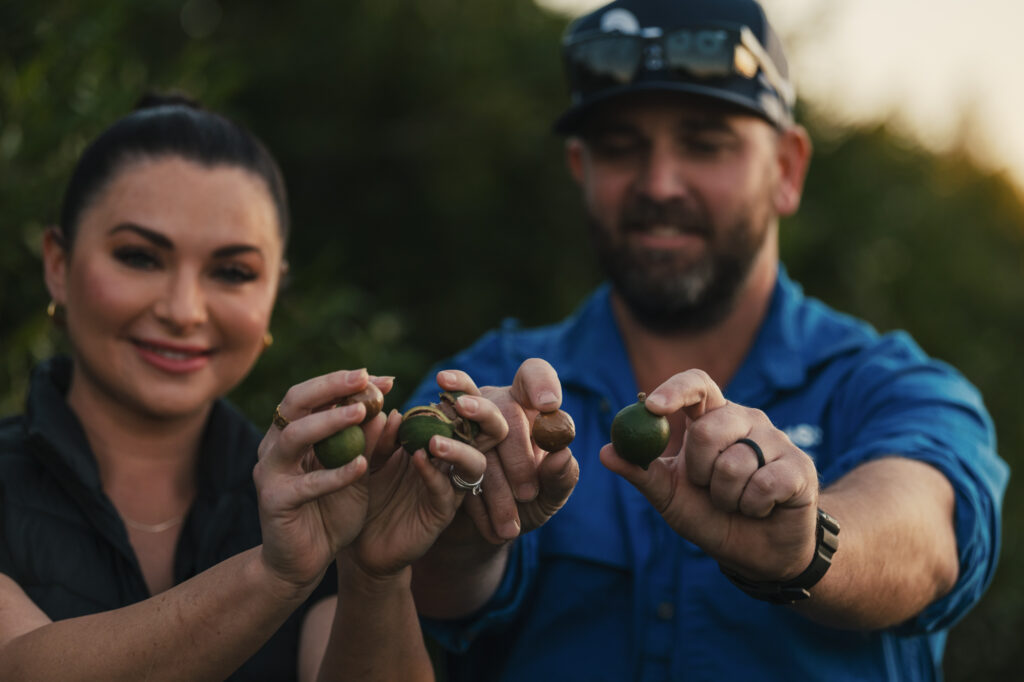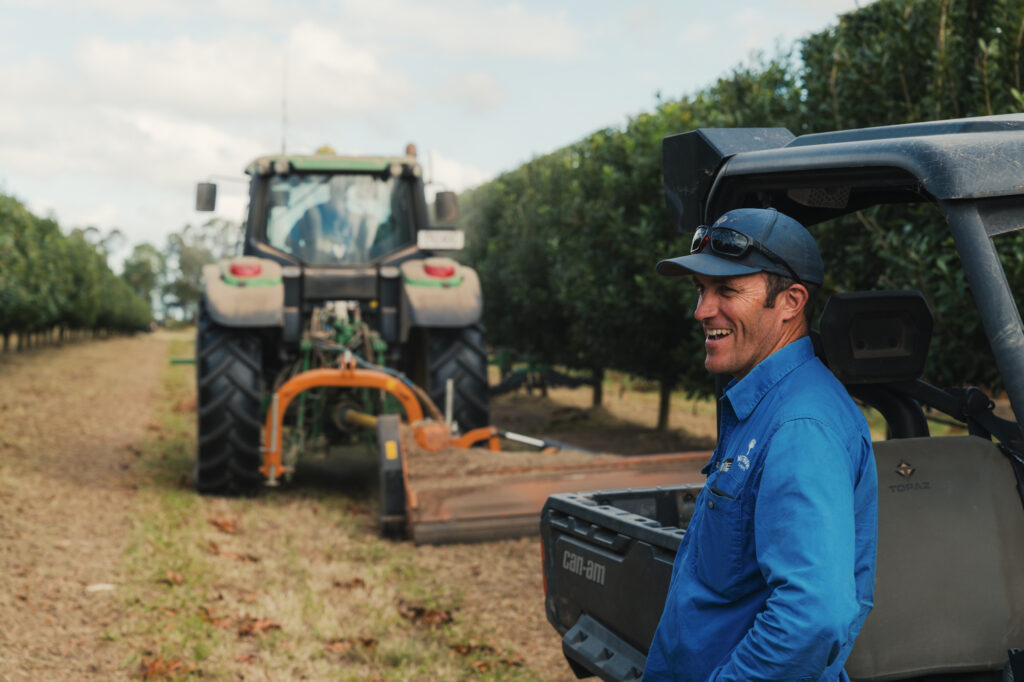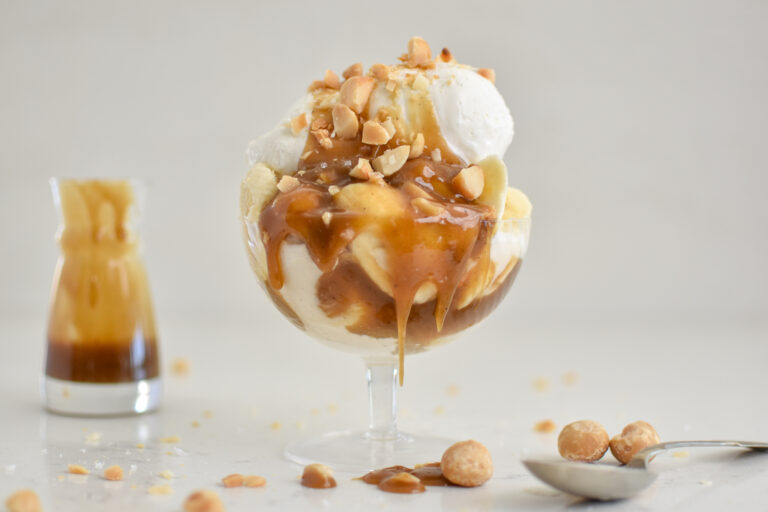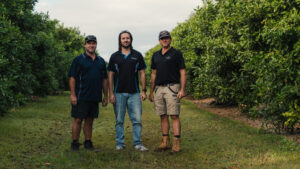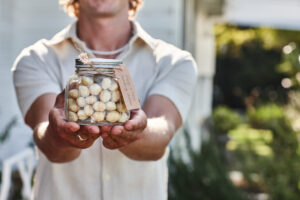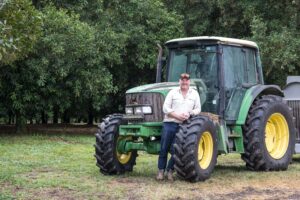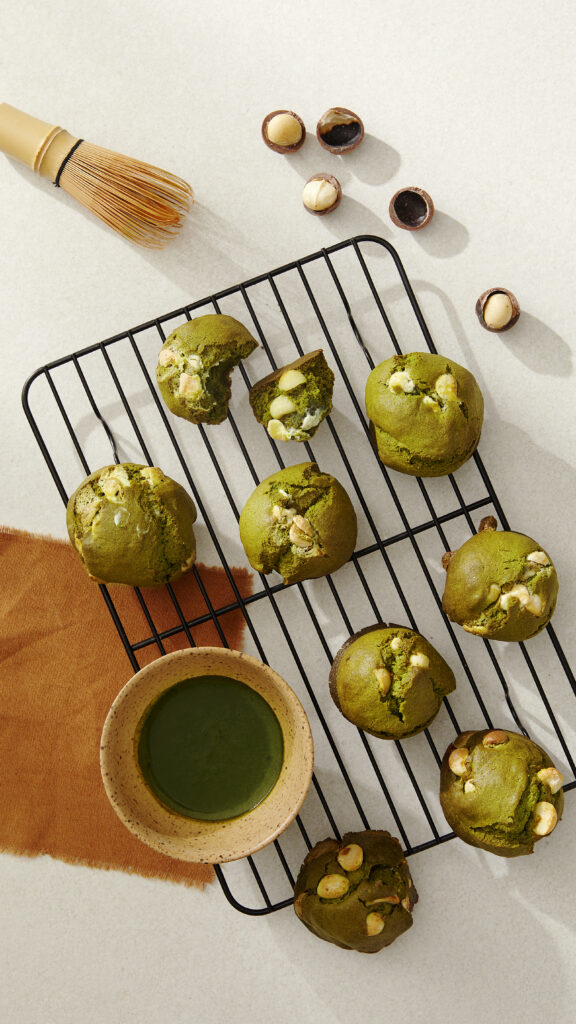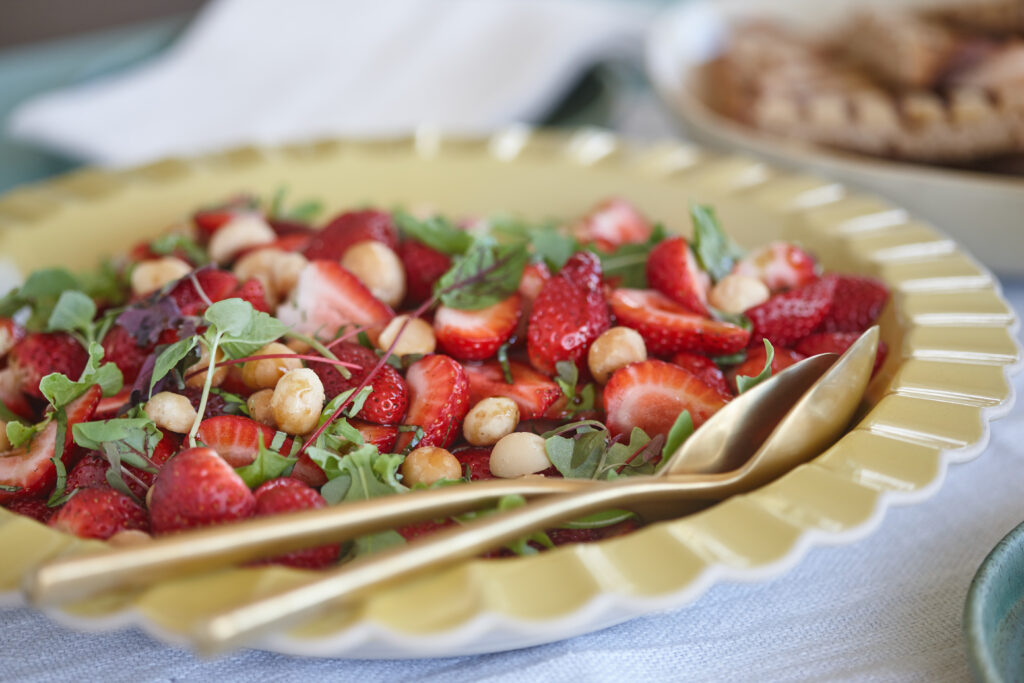Let these pictures guide you through the journey that a single nut takes from the lush landscapes of Northern NSW and South East Queensland to a table near you.
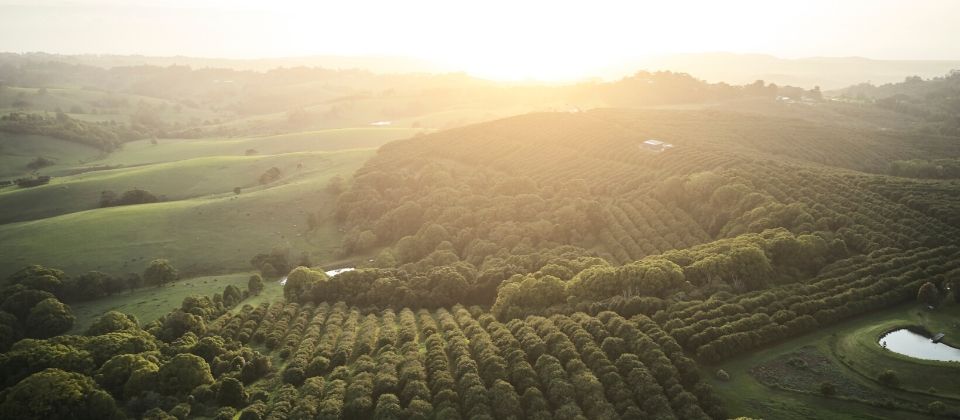
Macadamias can be found all over our country, but most production is concentrated in the beautiful, lush regions of South East Queensland and Northern NSW.
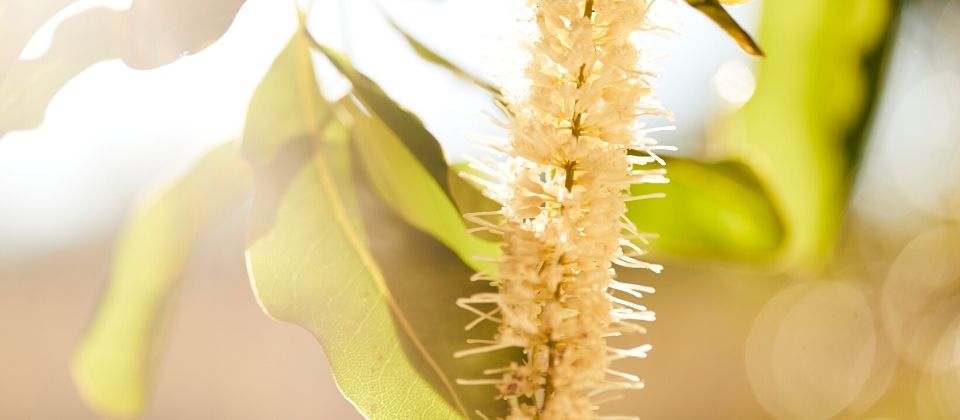
Did you know that macadamia nuts start out as flowers? The draping strands of flowers on a macadamia tree are called racemes. There are around 100 individual flowers in each raceme, but usually only around five of those will turn into nuts. Macadamia orchards are full of these white or pale pink flowers each year during spring.
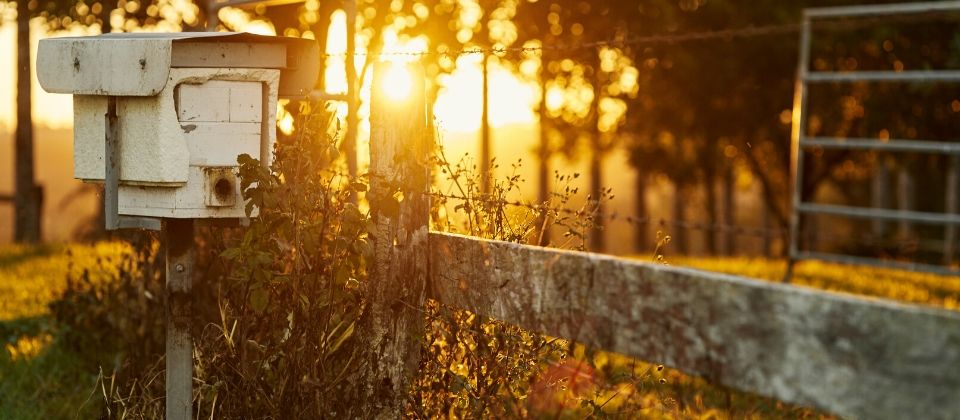
Growers encourage both native Australian bees and European ones by placing hives around their farms. Some consider the small native bees to be the best pollinators of the delicate flowers.
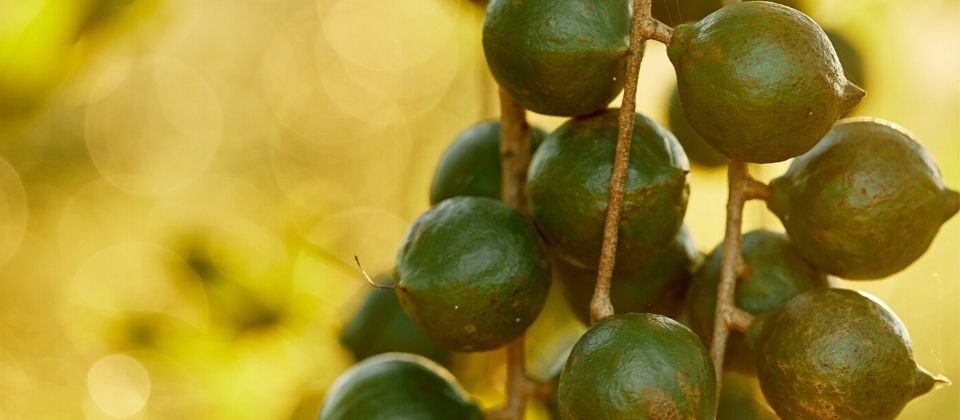
The nuts develop throughout the summer, encased in their hard shell with an outer green husk. Nuts that aren’t yet fully grown are called nutlets. Although the timing for each season can vary depending on the weather conditions, macadamias are usually ready for harvest in March.
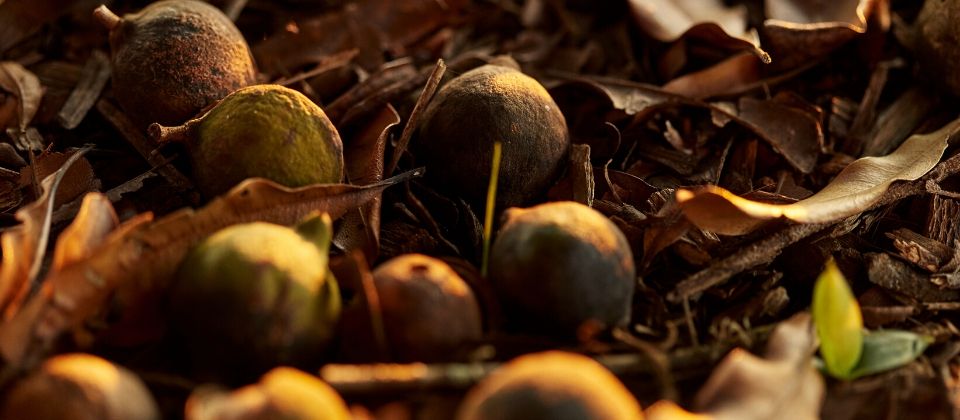
Fully grown nuts drop to the ground when they are ready for harvest. So growers actually gather them from the ground rather than picking them off the trees.
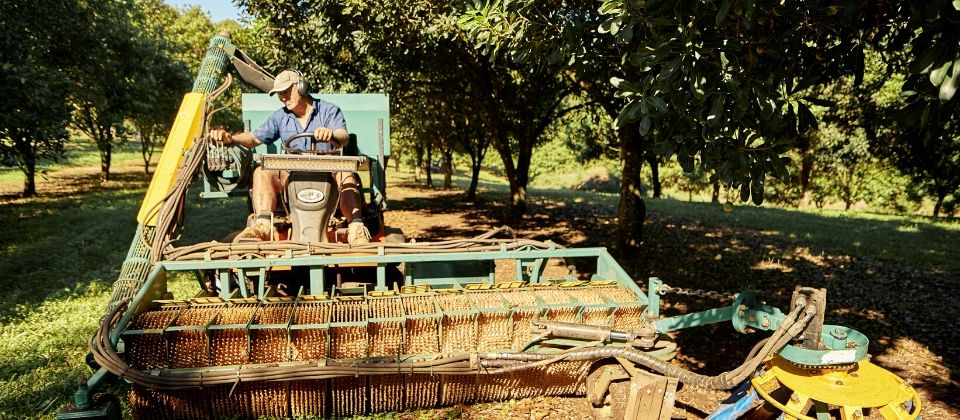
Harvesting used to be done by hand, but these days farmers use tractors and finger wheels to collect the nuts while still in their husks.
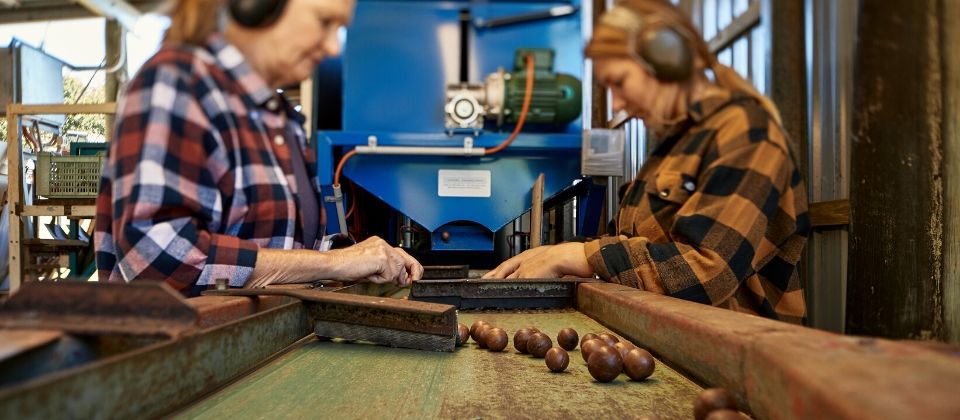
Nuts are usually removed from their husk on the farm, revealing the hard, brown shell beneath.
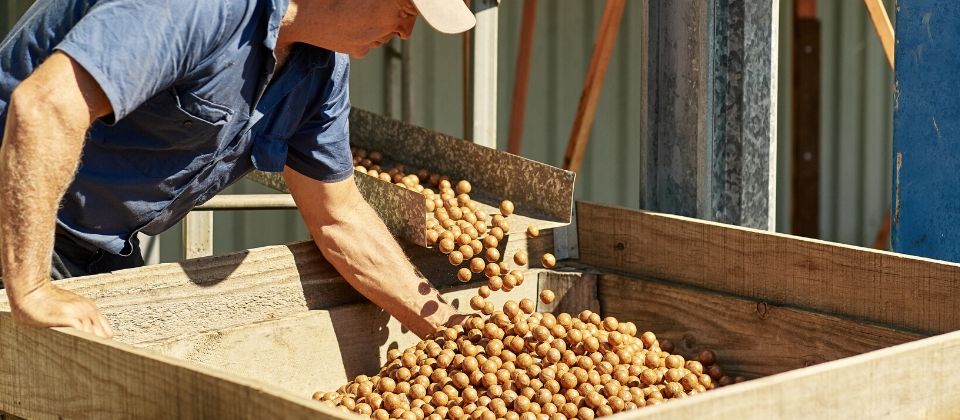
The dehusked macadamias are delivered to processors in their shells where they are weighed, graded and cracked. The very hard shells are as useful as the nut is delicious. They can be used to make everything from homewares to pool filters and are even used as a renewable energy source. No part of the macadamia is wasted.
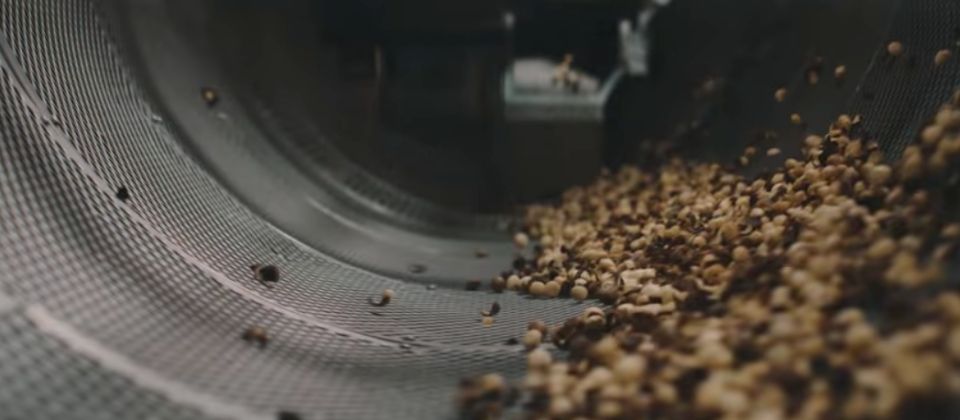
Most people buy macadamias already cracked and ready to eat. You can purchase macadamias in their shells but, because they are so hard, the nuts usually require a specialist nut cracker to open them.
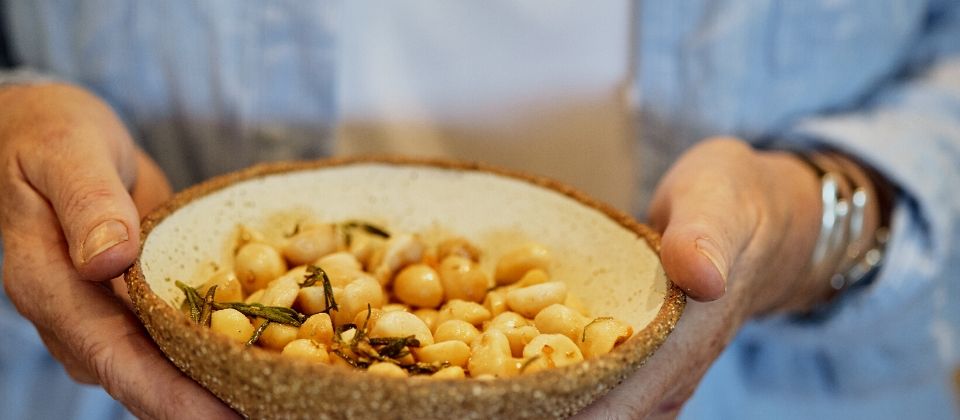
The kernels have a distinctive, buttery crunch that makes a moreish snack and provides rich nutty flavour and unique texture to both savoury and sweet dishes. They can also be transformed into macadamia milk, macadamia butter and a number of other delicious dairy alternatives.
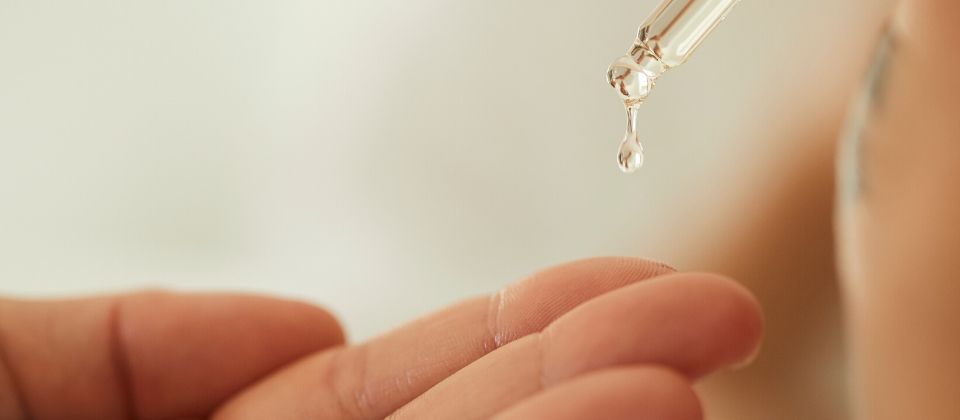
Macadamias are cold-pressed to extract an oil that is versatile in cooking and also is highly valued in the cosmetics industry for its anti-aging properties.
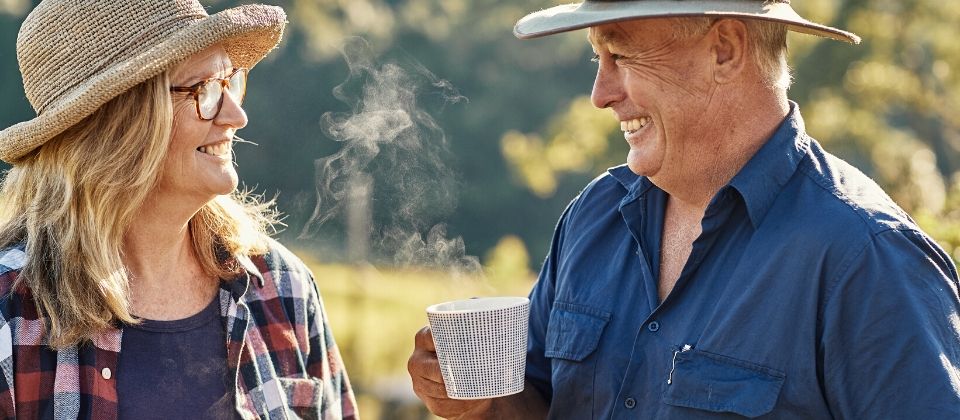
Back on the farm, one season flows into the next. After the harvest, growers have time for a quick cuppa, before they prepare the orchard for next year’s crop.
